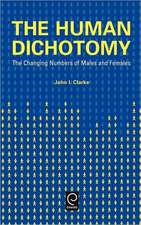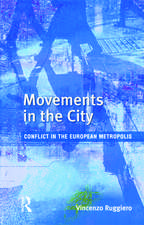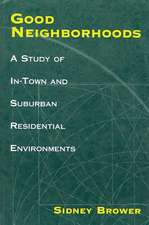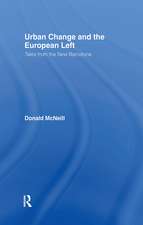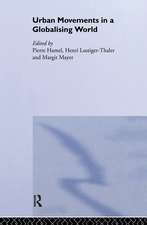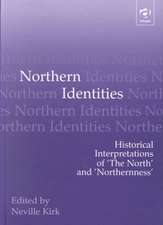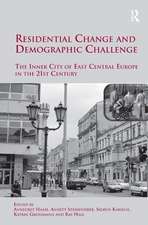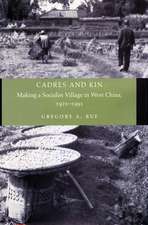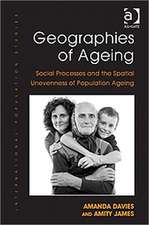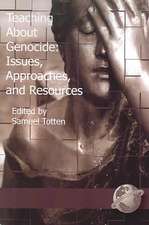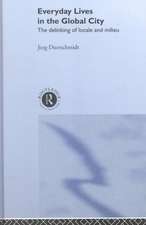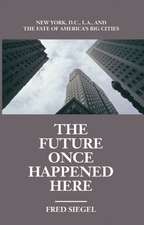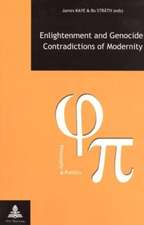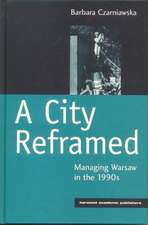The New American Suburb: Poverty, Race and the Economic Crisis
Editat de Katrin B. Anackeren Limba Engleză Paperback – 6 feb 2018
| Toate formatele și edițiile | Preț | Express |
|---|---|---|
| Paperback (1) | 312.43 lei 6-8 săpt. | |
| Taylor & Francis – 6 feb 2018 | 312.43 lei 6-8 săpt. | |
| Hardback (1) | 768.94 lei 6-8 săpt. | |
| Taylor & Francis – 28 feb 2015 | 768.94 lei 6-8 săpt. |
Preț: 312.43 lei
Preț vechi: 371.71 lei
-16% Nou
Puncte Express: 469
Preț estimativ în valută:
59.78€ • 65.14$ • 50.38£
59.78€ • 65.14$ • 50.38£
Carte tipărită la comandă
Livrare economică 24 aprilie-08 mai
Preluare comenzi: 021 569.72.76
Specificații
ISBN-13: 9781138547209
ISBN-10: 1138547204
Pagini: 312
Dimensiuni: 156 x 234 mm
Greutate: 0.45 kg
Ediția:1
Editura: Taylor & Francis
Colecția Routledge
Locul publicării:Oxford, United Kingdom
ISBN-10: 1138547204
Pagini: 312
Dimensiuni: 156 x 234 mm
Greutate: 0.45 kg
Ediția:1
Editura: Taylor & Francis
Colecția Routledge
Locul publicării:Oxford, United Kingdom
Cuprins
Contents: Introduction, Katrin B. Anacker. Section I Suburban Poverty: The resurgence of concentrated poverty in America: metropolitan trends in the 2000s, Elizabeth Kneebone and Carey Anne Nadeau; Debunking the 'cookie-cutter' myth for suburban places and suburban poverty: analyzing their variety and recent trends, Karen Beck Pooley. Section II Racial, Ethnic, and Nativist Change: The Washington, DC Metropolitan Region - traditional no more?, Carolyn Gallaher; Local immigration legislation in two suburbs: an examination of immigration policies in Farmers Branch, Texas, and Carpentersville, Illinois, Bernadette Hanlon and Thomas J. Vicino. Section III Suburban Decline - Or Not?: Beyond sprawl: social sustainability and reinvestment in the Baltimore suburbs, Bernadette Hanlon; Metropolitan growth patterns and inner-ring suburban decline: a longitudinal analysis of the 100 largest U.S. metropolitan areas, Sugie Lee, Nancey Green Leigh and Andrew McMillan. Section IV Suburban Foreclosures: Responses to foreclosure and abandonment in Cleveland's inner suburbs: three case studies, W. Dennis Keating; Punctuated equilibrium: community responses to neoliberalism in three suburban communities in Baltimore County, Maryland, Gregory Smithsimon. Section V Suburban Policy: Revitalizing distressed older suburbs: case studies in Alabama, Michigan, Ohio, and Pennsylvania, Kathryn W. Hexter, Edward W. (Ned) Hill, Benjamin Y. Clark, Brian A. Mikelbank and Charles Post; The response of the nonprofit safety net to rising suburban poverty, Benjamin J. Roth and Scott W. Allard. Index.
Notă biografică
Katrin B. Anacker is Associate Professor at George Mason University's School of Policy, Government, and International Affairs, Arlington, VA, USA.
Recenzii
"[T]his book will be a useful addition to the shelf of any scholars interested in the changing socio-economic and cultural patterns of US suburbia. Many of the individual chapters could find their way into the reading packs for US urban studies courses. The suburbs of the US are increasingly socio-economically and ethno-culturally diverse and this book provides helpful testament to their ongoing fissures and ruptures."
Jago Dodson, Centre for Urban Research, RMIT University, Australia, Housing Studies
’The old dichotomy between affluent suburbs and problem central cities of metropolitan USA is fast disappearing. Suburbs in the US are now at the forefront of wrenching change including increasing concentrations of the poor, housing foreclosures and growing racial and ethnic diversity. This edited book provides a wide-ranging discussion and case studies of this new metropolitan reality and is essential reading to understand the predicament of the suburbs and the possibilities of appropriate public policies.’ John Rennie Short, University of Maryland Baltimore County, USA ’Katrin Anacker and the authors advance detailed research into associations, causes, and consequences of diverse socio-economic and poverty trajectories affecting thousands of suburbs. The researchers explore important policy effects, such as urban containment policies, on suburban poverty, and whether urban sustainability policies can be implemented to increase equity among income and racial groups.’ William H. Lucy, University of Virginia, USA ’American suburbia is not what it used to be: the classical donut metaphor - suggesting an empty core and a sugar-glazed ring - does not hold up to serious scrutiny. A closer look behind the white picket fence reveals a complex social reality. While experts and residents have been suspecting this for a while, Katrin B. Anacker’s edited collection The New American Suburb drills down through the multi-layered fabric that is today’s urban periphery. The voices assembled in this important empirically rich volume are part of a more profound shift in Urban Studies: to rethink our metropolitan regions from the outside in.’ Roger Keil, York University, Canada ’Once depicted as a refuge for the white middle class, American suburbs now display a puzzling mosaic of income and demographic diversity. The New American Suburb presents a broad and insightful portrait of this new social and economic geography. Addressing topics that range from th
Jago Dodson, Centre for Urban Research, RMIT University, Australia, Housing Studies
’The old dichotomy between affluent suburbs and problem central cities of metropolitan USA is fast disappearing. Suburbs in the US are now at the forefront of wrenching change including increasing concentrations of the poor, housing foreclosures and growing racial and ethnic diversity. This edited book provides a wide-ranging discussion and case studies of this new metropolitan reality and is essential reading to understand the predicament of the suburbs and the possibilities of appropriate public policies.’ John Rennie Short, University of Maryland Baltimore County, USA ’Katrin Anacker and the authors advance detailed research into associations, causes, and consequences of diverse socio-economic and poverty trajectories affecting thousands of suburbs. The researchers explore important policy effects, such as urban containment policies, on suburban poverty, and whether urban sustainability policies can be implemented to increase equity among income and racial groups.’ William H. Lucy, University of Virginia, USA ’American suburbia is not what it used to be: the classical donut metaphor - suggesting an empty core and a sugar-glazed ring - does not hold up to serious scrutiny. A closer look behind the white picket fence reveals a complex social reality. While experts and residents have been suspecting this for a while, Katrin B. Anacker’s edited collection The New American Suburb drills down through the multi-layered fabric that is today’s urban periphery. The voices assembled in this important empirically rich volume are part of a more profound shift in Urban Studies: to rethink our metropolitan regions from the outside in.’ Roger Keil, York University, Canada ’Once depicted as a refuge for the white middle class, American suburbs now display a puzzling mosaic of income and demographic diversity. The New American Suburb presents a broad and insightful portrait of this new social and economic geography. Addressing topics that range from th
Descriere
The majority of Americans live in suburbs and until about a decade or so ago, most suburbs had been assumed to be non-Hispanic White, affluent, and without problems. However, recent data have shown that there are changing trends among U.S. suburbs. This book provides timely analyses of current suburban issues by utilizing recently published data from the 2010 Census and American Community Survey to address key themes including suburban poverty; racial and ethnic change and suburban decline; suburban foreclosures; and suburban policy.

